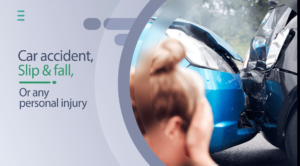The release is a document presented to the claimant or plaintiff by the insurance company prior to delivery of any promised compensation. The insurance company asks for a signature of the claimant/plaintiff on the presented document, before it agrees to carry out the payoff.
What is released, following presentation of the signed document?
The rights of the person that has signed the release: He or she has forfeited the right to go after the other driver, if the money from the payoff does not cover all of the costs created by the damage.
Precautions to take before signing
Be sure that all of the injured individuals have reached the point of maximum medical improvement. Their treating physician should have provided them with that insurance. Obviously, any victim that had failed to seek medical assistance during the 24-hour period that followed the accident would not be able to carry take this precaution. He or she could suffer with slow-to-emerge symptoms long after having signed the company’s document/release.
Before signing, have the form approved by a personal injury attorney in Etobicoke. He or she would understand the full implications for all of the legal language. He/she could make sure that the claimant/plaintiff had not overlooked the potential for some future loss, one that the insurance company ought to cover.
Take the time to ponder this question: Was someone else partly responsible for the accident, or for the resulting injuries? If the answer to that question was “yes,” then that would serve as a reason for not releasing the mentioned rights. Refusal to sign would provide any claimants/plaintiffs with the ability to sue the recognized parties.
What could happen to someone that had failed to observe the listed precautions?
That would depend on the terms of the precaution that had been ignored. For instance, if the claimant chose to accept a payoff without knowing for sure whether or not all occupants of the damaged vehicle had remained free of injuries, then, as mentioned, any one of them could later develop slow-to-emerge symptoms.
If the person with those same symptoms had never sought any form of medical intervention, then the cause for development of any symptom would remain a mystery. In other words, the injured patient would seek treatment without linking the symptoms to the cause, the automobile accident.
The claimant might even forgo the right to an extension of the statute of limitations. That could be the case, if one of the injured occupants had been a minor, at the time of the accident. That minor would have a right to sue the other party, after reaching the age of 18, seeking compensation of the medical expenses that were caused by the injury.




